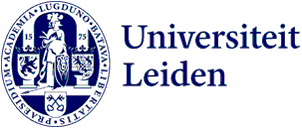
CAIRELab event results in three potential collaborations between AI experts and LUMC
SAILS and CAIRELab, the LUMC’s AI expertise centre, recently held an event that gave healthcare professionals and computer scientists the chance to meet. The meeting proved fertile ground for new collaborations.
How can AI benefit the healthcare sector? Researchers from Leiden’s SAILS interdisciplinary research programme came to the LUMC to share their knowledge and collect cases from which they could benefit. The LUMC staff presented three real-world examples for which they hoped AI technology could provide solutions:
1) AI for clinical genetics
Staff from the clinical genetics department interview patients about their medical history and the results of previous physical examinations. In clinical genetics, it is important to relate certain terms from the Human Phenotype Ontology (HPO) to such interviews. This takes a lot of time, so the head of department Gijs Santen wanted to know if AI in the broadest sense of the word could support this process and, from such interviews, match the right HPO terms to a patient.
2) AI and patient safety
The Directorate of Quality and Patient Safety receives a lot of patient feedback every day. All these responses have to be read in preparation for its semi-annual meeting. Quality adviser Lotte Elliott wondered whether AI could help review these texts and make the areas for improvement clear.
3) AI and medical decision sciences
Assistant Professor of Medical Decision-making Marleen Kunneman does a lot of consultation analysis. She records consultations that have to be manually transcribed and extensively analysed. How could AI be used to make this analysis more efficient?
‘Yes, we can do that’
‘The good thing was’, says innovation manager Marieke van Buchem, ‘that for all the cases, Professor of Computer Science Suzan Verberne immediately said, “Yes, we can do that!” Connections were immediately made.’ But things are not always as simple as they might seem and the researchers could see potential problems in all three cases. ‘You can build a model’, says Van Buchem, ‘but you do have to be able to use it and incorporate it into a tool, preferably one that is integrated into the hospital’s systems. If you can’t integrate such a tool and need a separate dashboard for it, then the requirements are very different. And you may end up needing to use a completely different technique.’
The meeting also generated some concrete leads. For all three cases, there was an interest in putting a student on them, at the very least. ‘That’s the low-hanging fruit from meetings like these’, Van Buchem concludes. ‘New collaborations, for example in the form of intern exchanges. Because there is always a demand for good internships at the university and we have cases galore at the LUMC.’
Want to know more about CAIRELab, LUMC's AI expertise centre? Contact ai@lumc.nl
Photo: Marieke van Buchem
